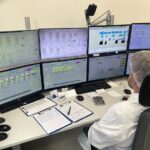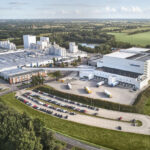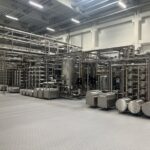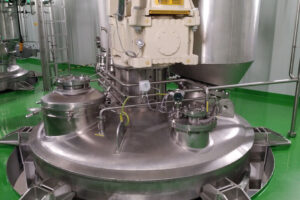Leveraging GEA’s expert knowledge and two digital tools, GEA Smart Filtration CIP and Smart Filtration Flush, the German dairy Molkerei Ammerland has reduced water usage by 48% and energy consumption by 77% in the cleaning of its membrane filtration systems. These savings significantly exceed initial projections. At the Wiefelstede site, GEA successfully implemented this software in a new membrane filtration unit and, for the first time, in three existing process plants, including one from a different supplier.
Membrane filtration systems are essential in dairy processing, separating components such as whey or extracting water without thermal stress. At Ammerland’s cheese production site, liquid whey, a valuable byproduct, is pre-concentrated in GEA reverse osmosis units before being evaporated and spray-dried into whey powder.
Previously, the filtration systems were cleaned according to fixed parameters, with pumps operating at full capacity throughout the cleaning process. This approach consumed a significant amount of water and energy. Now, the new GEA tools optimize the process intelligently. GEA Smart Filtration CIP pulses the pumps to reduce energy consumption, while GEA Smart Filtration Flush continuously monitors water quality during the cleaning cycles, stopping the process as soon as no cleaning agents remain in the system. This prevents chemicals from entering the product. “These results far exceed our expectations,” said Armin Tjards, Director Production of Molkerei Ammerland. “The significant savings are helping us achieve our sustainability goals while boosting the efficiency of our production processes.”
More production time through intelligent cleaning
A key aspect of these savings is the precise control of the cleaning process. By constantly monitoring water quality, Smart Flush ensures that only the necessary amount of water is used, while simultaneously reducing wastewater. This technology saves the dairy an average of 15% of cleaning time and thus increases plant availability. GEA Smart Filtration CIP reduces pump energy consumption to a quarter of previous levels, without impairing cleaning performance. The principle is similar to that of a modern washing machine. The pump operates in intervals, allowing the cleaning chemicals to work more effectively while using less energy.
Sustainable solutions for economic benefits
For the first time, GEA’s service team installed the software on two of its own older existing systems and one from another manufacturer. The retrofits were carried out during ongoing operations. The introduction of the GEA tools across the four membrane plants at Molkerei Ammerland brings not only environmental benefits but also significant financial savings. Annual cost reductions of around 180,000 Euro deliver a return on investment in less than two years. These results demonstrate that sustainable engineering solutions can be both environmentally friendly and financially advantageous. The combination of resource efficiency and cost savings strengthens the dairy’s competitiveness and supports its environmental targets.
The successful implementation of these digital technologies highlights the potential of GEA Smart Filtration CIP and Flush for existing and new filtration systems. GEA plans to expand the use of these tools in the dairy and food industries to optimise further production facilities. Both tools are part of GEA’s service portfolio for system upgrades and modernisation, including non-GEA systems











